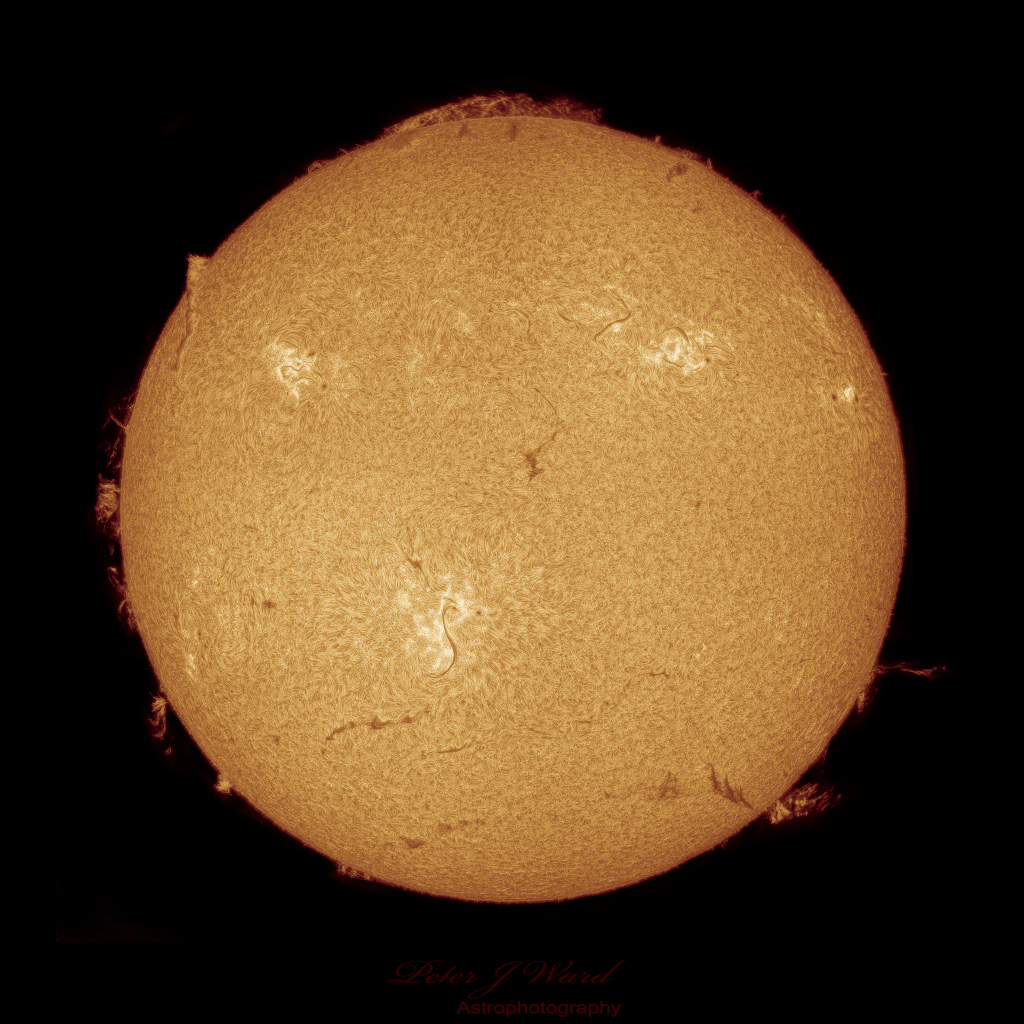2023年1月14日
Perihelion Sun 2023
Image Credit & Copyright: Peter Ward (Barden Ridge Observatory)
Explanation: Perihelion for 2023, Earth’s closest approach to the Sun, was on January 4 at 16:17 UTC. That was less than 24 hours after this sharp image of the Sun’s disk was recorded with telescope and H-alpha filter from Sydney, Australia, planet Earth. An H-alpha filter transmits a characteristic red light from hydrogen atoms. In views of the Sun it emphasizes the Sun’s chromosphere, a region just above the solar photosphere or normally visible solar surface. In this H-alpha image of the increasingly active Sun planet-sized sunspot regions are dominated by bright splotches called plages. Dark filaments of plasma snaking across the solar disk transition to bright prominences when seen above the solar limb.
Tomorrow’s picture: cosmic crustacean
2023年近日点的太阳
图像提供与版权: Peter Ward(Barden Ridge Observatory)
说明: 2023年地球最接近太阳的近日点,出现在世界时1月4日16:17 UTC。也就是从地球.澳大利亚.悉尼(悉尼)以望远镜和H-α滤镜,拍下这幅清晰的日盘图像之后不到24小时。H-α滤镜只透过氢原子所发出的特征性红光,因此这幅太阳图像,突显了罩在太阳可见光球表层上方的色球层。在这幅呈现日益活跃太阳的H-α图像里,大小和地球相当的黑子区,最突出的结构是称为闪焰(耀斑)的亮区。此外,蜿蜒在日盘上的管状等离子称为暗条,当它出现在太阳临边上方时就成为明亮的日珥。
明日的图片: cosmic crustacean



